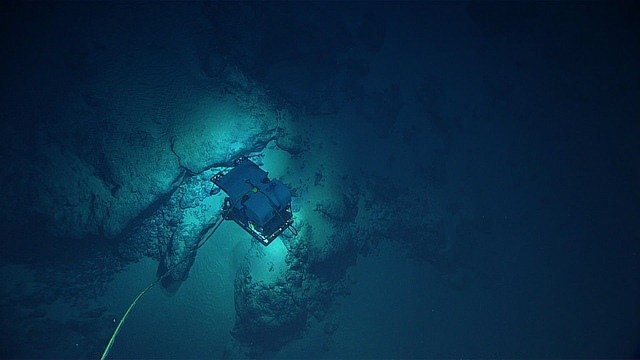
Sometimes companies or agencies lose their equipment at sea. And rather than leave an expensive investment behind on the ocean floor, they send in the troops.
In this case, “the troops” is one Kodiak local.
ROVs, or remotely operated underwater vehicles, come in various forms. Mark Blakeslee says he’s got several of those.
“There’s big expensive ones costing millions of dollars in the oil industry that have lots of capabilities,” Blakeslee said. “There’s also inspection class ROVs.”
Blakeslee contracts with different companies to retrieve their gear. Things like acoustic doppler current profilers, which measure water speed and direction, and a lot of other high tech instruments.
The National Oceanic and Atmospheric Administration most recently hired Blakeslee to rescue a data collecting tool they had dropped in the waters of Barrow Canyon.
“They were towing a winged object. Sort of a cage with wings on it,” Blakeslee said. “They could command it to go up or down in the water column through this tow cable, but the cable broke and they dropped it in 500 feet of water.”
Blakeslee said they went out on an oil response boat and tracked the machine by following its cable.
The mission wasn’t without complications, including bad weather and technical difficulties.
“The first day we got down and I lost a thruster,” Blakeslee said. “I saw a small white flash of death, but it was just the death of a thruster, so that was disappointing, but I had enough maneuverability to go around in big circles.”
It took a few days, but Blakeslee said on the third try the lost object popped up on sonar. Blakeslee said he’d like to expand into tourism with his ROVs. He’d wants to take people out and give them a look under the ocean surface.
Kayla Deroches is a reporter at KMXT in Kodiak.




